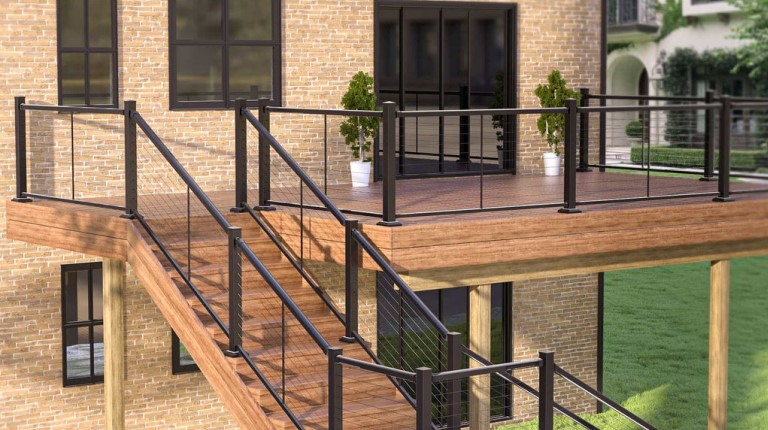This article explores aluminium railings and composite railings. Each material offers distinct strengths. Each option affects durability and installation time. This discussion uses simple terms. This piece offers clear insight.
Understanding Aluminium Railings
Aluminium railings offer strong support. Aluminium resists rust. Aluminium stands firm in harsh weather. Aluminium needs little care. Aluminium railings look clean. Many homeowners choose aluminium for long lasting value. Aluminium stands up well over long periods. Installation feels smooth with aluminium. Lightweight material helps workers. Fast progress follows.
Understanding Composite Railings
Composite railings blend recycled materials and wood fibres. Composite railings offer steady strength. Composite railings hold shape in heat. Composite railings resist fading. Composite railings need regular cleaning. This material offers a warm look. Installation feels slower with composite. Composite railings weigh more. Workers need patience. Composite railings still provide reliable guard strength.
Installation Time Comparison
Installation time affects every project. Aluminium often needs less effort. Composite installation takes more steps. Project planning matters. Each site demands care. decksforlife.ca highlights material choices. Balanced scheduling helps teams. Careful handling helps avoid damage. Strong planning ensures clean results.
Durability Analysis
Durability shapes long term value. Aluminium stays firm under stress. Aluminium resists scratches. Aluminium holds shape after strong wind. Composite railings also last long. Composite railings resist pests. Composite railings show strength in moisture. Each material offers stable service life. Regular washing helps each system. Long lasting value depends on steady care. Material choice affects future cost.
Long Term Maintenance
Long term upkeep shapes ownership. Aluminium needs gentle washing. Aluminium needs simple checks. Aluminium rarely needs repair. Composite railings need more attention. Composite railings need deep cleaning. Composite railings handle wear with steady effort. Frequent care preserves bright surfaces. Owners see value with discipline. Each system answers different needs. Each material rewards steady upkeep.
Cost Considerations
Cost guides choices. Aluminium offers mid-range price. Composite railings also sit in a mid-range tier. Project scope shapes final cost. Labour time affects budget. Maintenance cost adds up over long years. Each option fits different goals. Buyers weigh short term needs. Buyers weigh long term durability. Smart planning guides selection.
Environmental Impact
Environmental factors shape modern decisions. Aluminium uses recyclable material. aluminium creates low waste. Composite railings use reclaimed content. Composite railings reduce pressure on forests. Sustainable thinking guides many projects. Green planning supports long lasting value. Responsible choices enrich outdoor spaces. Earth friendly goals help guide selection.
Future Performance Outlook
Future performance guides many plans. Aluminium will likely stay popular due to strong weather resistance and easy upkeep. Composite railings will grow in appeal due to warm appearance and stable strength. Outdoor trends push builders toward steady materials with long service life. Many homeowners search for safe railing systems that offer comfort and beauty. Projects grow in scale as more people invest in patios and balconies. Solid design efforts support safe movement in these areas. Future needs point toward steady innovation in railing systems. Growth.
Conclusion
Both aluminium railings and composite railings offer strong advantages. Each system fits different goals. Installation time differs. Durability differs. Maintenance needs differ. Thoughtful buyers review each factor. Successful projects follow clear planning. Final choices shape long term comfort.

